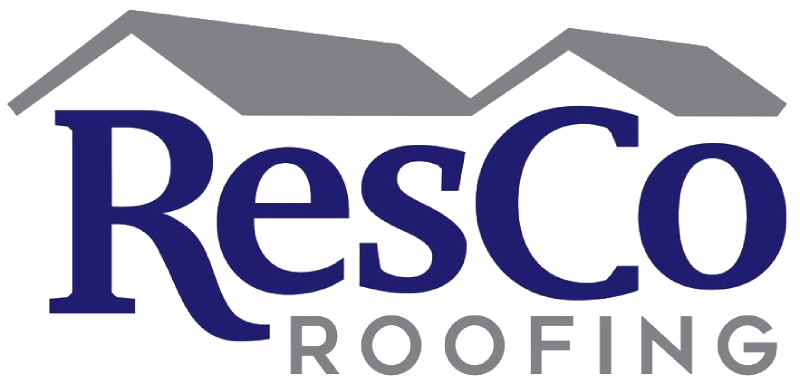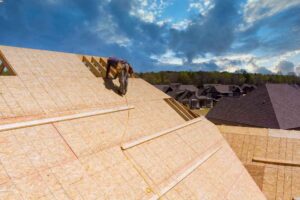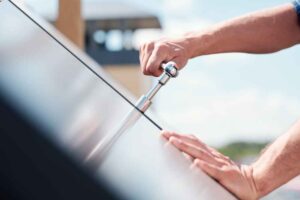Metal Roof Residential: Transform Your Home’s Aesthetic and Efficiency
Your home is not just a mere structure; it’s a reflection of your lifestyle, values, and personal tastes. Every element of your dwelling, right down to the roof over your head, plays a significant role. In an era where sustainability is driving architectural trends, people are increasingly turning to metal roof residential as a solution that marries beauty with functionality. This comprehensive guide explores the magnanimous impact of metal roofing on your home’s aesthetic and efficiency, making a compelling case for those in the market for a sustainable upgrade.
The Benefits of Metal Roofing
Metal roofing has been around for centuries, and its continued relevance is a testament to its unparalleled benefits. Here are some of the key advantages of opting for a metal roof for your home:
- Durability and Longevity: Metal roofing stands unrivaled in terms of durability and longevity. With a lifespan extending beyond 50 years, metal roofing outlasts traditional materials, resisting weather extremes like hail, wind, and even fire. This robustness ensures homeowners peace of mind, knowing their investment will endure for decades.
- Energy Efficiency and Cost Savings: Reflective properties of metal roofs significantly reduce cooling costs in hot climates by deflecting sunlight away from the home. This energy efficiency not only leads to substantial cost savings on utility bills but also lessens the strain on HVAC systems, prolonging their operational life.
- Low Maintenance and Easy Installation: Unlike other roofing materials that may require frequent repairs or replacement, metal roofing demands minimal upkeep. Its resistance to rot, mildew, and pest infestation further reduces the need for regular maintenance tasks. Additionally, metal roofs can often be installed directly over existing roofs, simplifying and speeding up the installation process.
- Eco-friendliness and Sustainability: Metal roofing is a green choice. Made from recyclable materials and being 100% recyclable at the end of its life, it supports environmental sustainability. Its longevity also means less waste in landfills from roof replacements. Furthermore, its energy efficiency contributes to reduced greenhouse gas emissions.
- Design Versatility and Aesthetic Appeal: Offering a wide array of styles, colors, and finishes, metal roofing complements any architectural design, from contemporary homes to historical properties. It can mimic the look of asphalt shingles, clay tiles, or even wood shakes, providing homeowners the freedom to achieve their desired aesthetic while enjoying the benefits of metal.
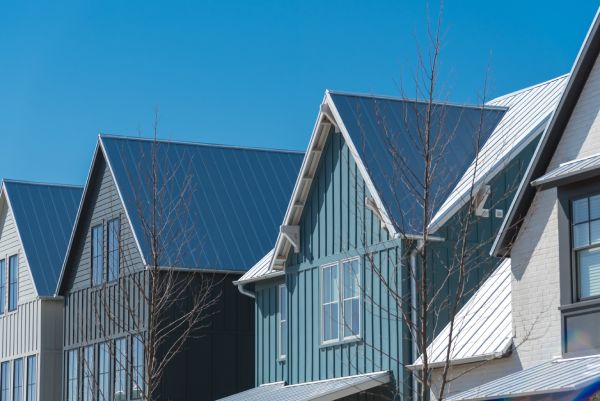
Types of Metal Roofing
When considering metal roofing for your home, it’s essential to understand the different types available, each offering unique qualities and benefits. The primary metal roofing materials include:
- Steel: Known for its strength, durability, and resistance to corrosion when coated with either zinc (galvanized) or a zinc-aluminum alloy (galvalume). Steel roofing is a cost-effective option suitable for various climates and home designs.
- Aluminum: Lightweight and highly resistant to corrosion, making it an excellent choice for coastal areas where salt air is prevalent. While typically more expensive than steel, its longevity and minimal maintenance needs justify the investment.
- Copper: Esteemed for its natural beauty, which evolves over time into a distinctive green patina. Copper is exceptionally durable and long-lasting but comes at a higher cost, often used for architectural highlights rather than full roofing solutions.
- Zinc: Durable and with a lower melting point, which contributes to energy efficiency during production. Zinc roofs are known for their ability to self-heal scratches and for their longevity, often lasting well over 100 years with minimal maintenance.
Each type of metal roofing material offers a unique set of advantages, making them suitable for different architectural styles, climates, and personal preferences. Choosing the right type depends on factors such as your home’s location, aesthetic goals, and budget.
Design Options for Metal Roofs
Metal roofing not only provides exceptional durability and eco-friendliness but also a high degree of customization through various design options. This customization ensures that homeowners can find the perfect roof to match their home’s architectural style and personal aesthetic preferences. Here are some of the design options available for metal roofs:
- Color Choices: With advancements in paint technology, metal roofs are available in a wide spectrum of colors, from traditional hues to bold, vibrant tones. This variety allows homeowners to choose a roof color that complements the exterior of their home and fits within their neighborhood’s aesthetic.
- Profiles and Panel Types: Metal roofing panels come in several profiles, including standing seam, corrugated, and tile-shaped. Each profile offers a different look, with standing seam providing a sleek, modern appearance, and corrugated panels offering a more rustic, traditional vibe.
- Finishes: Metal roofs can feature a variety of finishes, including matte, glossy, and textured. These finishes can enhance the roof’s aesthetic appeal and contribute to its reflectivity and energy efficiency. Some finishes also provide additional protection against UV rays, corrosion, and fading.
- Decorative Elements: For an added touch of elegance or to complement specific architectural styles, metal roofs can incorporate decorative elements such as metal shingles that mimic traditional roofing materials like cedar shakes, slate, or terracotta tiles.
Selecting the right combination of color, profile, finish, and decorative elements allows homeowners to achieve a unique and personalized look for their metal roof, enhancing their home’s curb appeal and overall value.
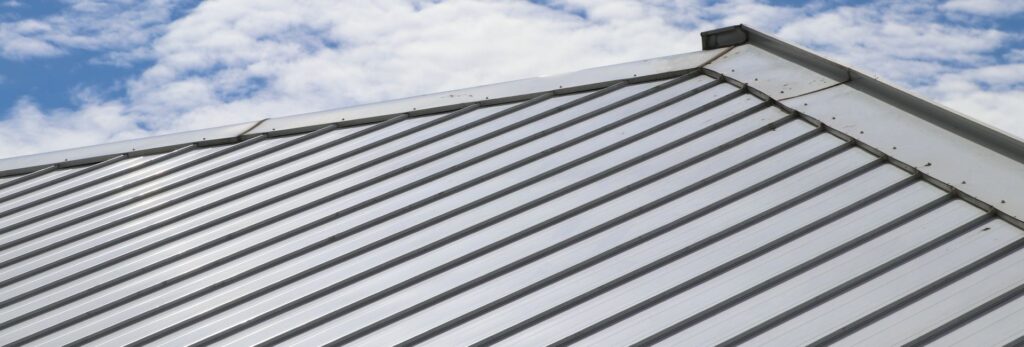
Installation Process for Metal Roofs
The installation of a metal roof is a critical process that requires precision, skill, and understanding of the specific material being used. It typically begins with a thorough inspection of the existing roof structure to ensure it can support the weight of the metal and to identify any areas that need repair or reinforcement. Next, a layer of insulation or an underlayment is laid down to provide additional protection against moisture and to improve energy efficiency.
Metal panels or shingles are then measured and cut to fit the roof’s specific dimensions. For standing seam metal roofs, panels are often manufactured to the exact lengths required for each roof section, minimizing the need for onsite adjustments. The metal roofing material is attached to the roof framework using screws or clips, depending on the system being installed. These fastening methods allow for thermal expansion and contraction, which is vital for maintaining the integrity of the roof system over time.
Special attention is paid to areas vulnerable to water infiltration, such as valleys, eaves, and roof penetrations. Proper flashing and sealing techniques are essential to prevent leaks and ensure the longevity of the roof. Finally, finishing touches, including trim and ridge caps, are installed to complete the roof and provide a polished, professional appearance.
Choosing an experienced installer who is familiar with metal roofing systems is crucial for a successful installation. Their expertise ensures that the roof will be installed correctly, function effectively, and adhere to local building codes and manufacturer’s warranty requirements.
Factors to Consider When Choosing a Metal Roof
Choosing the right metal roof for your home involves a careful consideration of several factors to ensure the roof will meet your needs, preferences, and budget. Here are the key factors to consider:
- Climate Compatibility: Certain metal roofing materials perform better in specific climates. For example, aluminum is ideal for coastal areas because of its superior resistance to salt corrosion, while galvanized steel is suitable for areas that experience heavy snowfall due to its strength and durability.
- Energy Efficiency: Metal roofs can significantly lower energy costs by reflecting solar radiant heat rather than absorbing it. Consider the energy efficiency ratings of different materials and coatings to choose a roof that will minimize heating and cooling costs.
- Aesthetics and Design: Your roof should complement your home’s architectural style and exterior colors. Consider the variety of colors, profiles, finishes, and decorative options available to enhance your home’s curb appeal.
- Longevity and Maintenance: Different metal materials offer varying lifespans and maintenance requirements. For example, copper and zinc roofs can last over a century with minimal maintenance, while steel and aluminum roofs might require periodic recoating to maintain their appearance and resistance to corrosion.
- Cost and Budget: The initial cost of a metal roof varies widely depending on the material, design, and installation complexity. While metal roofs are generally more expensive upfront than traditional roofing materials, they offer long-term savings through durability, low maintenance, and energy efficiency. Evaluate your budget and consider the long-term financial benefits of different metal roofing options.
- Local Building Codes and HOA Regulations: Some localities and homeowners associations have strict guidelines regarding roofing materials and styles. Check these regulations before making a final decision to ensure your new roof will comply.
- Environmental Impact: If sustainability is a concern, consider the recyclability and production impact of different metals. Many metal roofing materials are highly recyclable and have a smaller environmental footprint compared to traditional roofing options.
By thoughtfully weighing these factors, homeowners can select a metal roof that not only protects their home for decades but also enhances its beauty and efficiency.
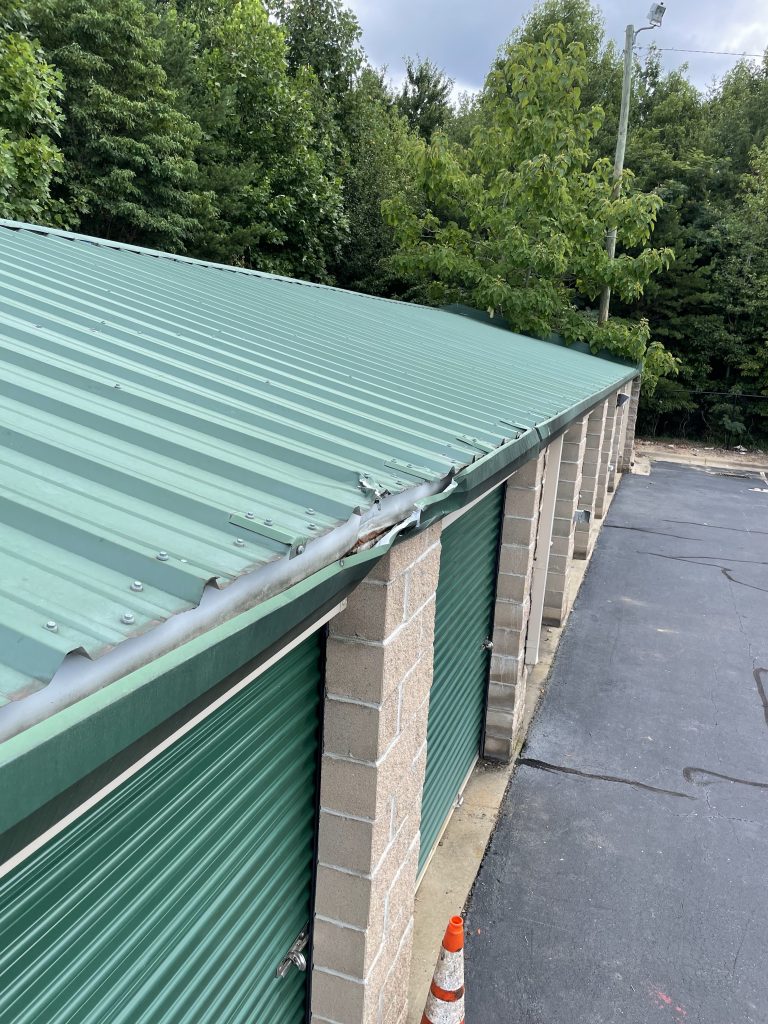
Maintenance and Lifespan of Metal Roofs
Metal roofs are celebrated for their longevity and minimal maintenance requirements, often outperforming other roofing materials in durability and life expectancy. Properly installed and maintained metal roofs can last 40 to 70 years, depending on the material. Galvanized steel, aluminum, copper, and zinc roofs each offer distinct lifespans that can significantly surpass those of asphalt shingles or wooden shingles.
The key to maximizing a metal roof’s lifespan involves regular inspections and addressing minor issues before they escalate. Homeowners should conduct visual inspections at least twice a year and after major weather events to check for signs of damage, such as scratches, dents, or loose panels. It’s also essential to keep the roof free of debris, such as leaves and twigs, which can retain moisture and potentially lead to corrosion.
While metal roofs require less maintenance than other types, some may need occasional recoating to maintain their aesthetic appeal and protective properties. This is particularly true for certain types of steel roofs, which might require a new coat of protective paint or sealant after a few decades.
Overall, the combination of durability, low maintenance, and longevity makes metal roofing a cost-effective and attractive option for homeowners looking for a long-term roofing solution.
Cost Comparison with Other Roofing Materials
When comparing the cost of metal roofing to other materials, it’s crucial to consider both the initial installation cost and the long-term financial implications. Initially, metal roofing is often more expensive than traditional materials such as asphalt shingles, wooden shingles, or concrete tiles. For example, the cost of asphalt shingle roofing typically ranges from $3.50 to $5.50 per square foot installed, whereas metal roofing systems can range from $6 to $14 per square foot installed, depending on the type of metal and the complexity of the installation.
However, the long-term savings associated with metal roofing can offset its higher upfront cost. Due to their durability, metal roofs require fewer repairs and can last two to three times longer than asphalt shingles, which have a lifespan of approximately 20 to 30 years. The energy efficiency of metal roofs, which reflect solar heat and can reduce cooling costs by up to 25%, adds to these savings. Additionally, the increased resilience of metal roofs to wind, fire, and water damage can lower insurance premiums in some areas.
Considering the lifespan and reduced maintenance and energy costs, metal roofing can be a more economical choice over the long run. Homeowners should perform a comprehensive cost analysis, factoring in both initial and lifecycle costs, to make an informed decision that accounts for their specific circumstances and needs.
In conclusion, metal roofing offers numerous benefits for homeowners, including durability, energy efficiency, aesthetics, and long-term cost savings. By considering the factors discussed in this guide and consulting with a reputable roofing professional, homeowners can select a metal roof that meets their needs and provides them with peace of mind for decades to come. So whether you’re looking to upgrade your home’s exterior or seeking a reliable roofing solution, metal roofing is certainly worth considering.
